| Mobility Drills | Strength Drills |
|---|---|
Among the hundreds of joints in your body, the hips just might be the most essential for quality movement.
“Mobile, stable, strong hip joints are the keystone to both avoiding injury and achieving optimal function,” says Dean Somerset, CSCS, an Edmonton-based exercise physiologist who specializes in injury prevention and rehab.
When the hips are working well, you move them in a wide variety of ways as you exercise or go about everyday tasks.
These days, however, optimally functioning hip joints are a rarity. Sitting for hours at a time has left many people with hips that are inflexible, unstable, and weak. This can cause pain and immobility in the hips. (Learn more at “Healthy, Happy Hips”.)
But the bad news extends beyond just the hips themselves. “Injuries in the lower back and knees often result from hip joints that aren’t strong enough or don’t move well,” says Somerset.
Try the following mobility moves for better function and improved performance. Do them once a week for every decade you’ve been alive (four times per week if you’re in your 40s, for example), even on days when you aren’t doing any other type of exercise.
Hip Mobility Drills
- Perform the following moves as a circuit.
- Complete one set by using the same leg for the single-leg movements, then switch legs for the second set; that’s one circuit. Rest as needed.
- Repeat the circuit one more time for a total of four sets.
1) Single-, Stiff-Legged Deadlift
“The toes of the back leg have to point toward the floor, and that hip needs to stay fully extended,” says Somerset. “If your chest goes down an inch, your back leg goes up an inch.”
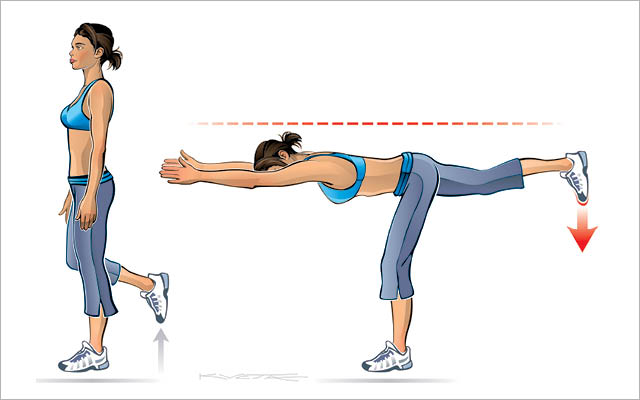
- Standing on one leg, hinge forward at the hip until your body forms a straight line parallel to the floor — or as close as you can get to parallel without rounding your back.
2) Overhead Squat
“This is a great all-around functional mobility builder,” says Somerset. But it may not come easy at first. Just strive to go as low as you can while keeping your heels firmly on the floor, and the bar as straight overhead as possible.
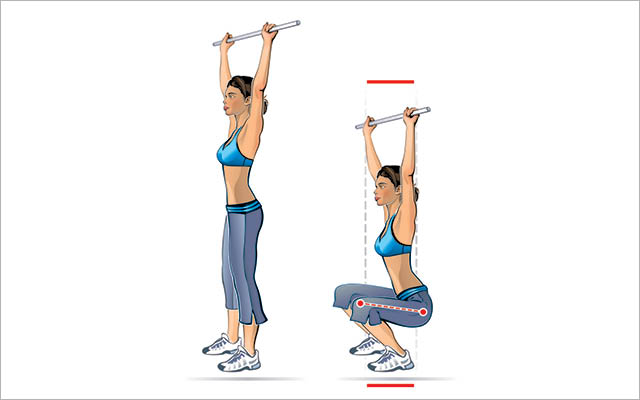
- Holding a broomstick, dowel, or light barbell overhead with a wide grip, squat as low as you can with control.
- Don’t let your heels rise, your back arch, or your knees cave inward.
3) Forward Lunge With Overhead Reach
“The stillness of the hips is essential. If you allow your hips to rotate backward, you can wind up reinforcing bad habits,” says Somerset.
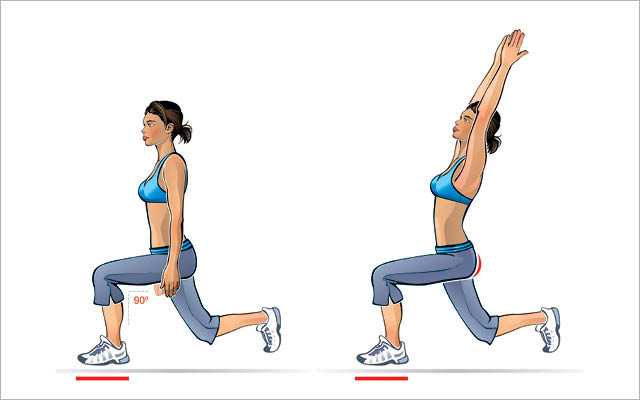
- Lunge forward, bending the front knee in about a 90-degree angle and lowering the opposite knee so it’s nearly touching the floor.
- Hold the lunge as you reach your arms overhead, allowing the chest to open and upper back to arch slightly.
Hip Strengthening Moves
- Unlike when you perform the mobility drills, you won’t complete the strength moves as a circuit — complete all sets of each exercise before moving on to the next.
- Rest 60 seconds between sets.
4) Hip Thrust
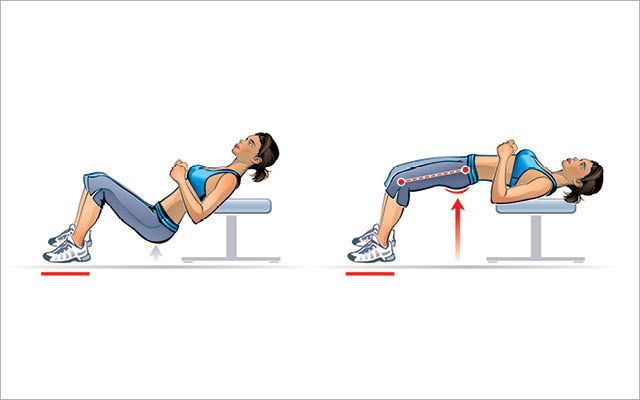
Sets and Reps: Three sets of eight to 12.
- Sit on the floor with your back leaning against the long side of a padded weight bench, feet parallel, shoulder-width, and flat on the floor in front of you.
- Keeping your knees aligned over your heels, lift your hips off the floor, finishing with them a few inches higher than your knees. Pause at the top.
- Slowly lower your hips, stopping when your glutes are a few inches off the floor. Repeat.
The Finer Points: Control the pace throughout the exercise, and squeeze your glutes together hard at the top of the movement. Once you’ve mastered the body-weight version, hold a padded barbell across your lap for additional resistance. “Unlike conventional squats and dead lifts,” says Somerset, “the hip thrust works the glutes with minimal strain on the lower back.”
5) Speed-Skater Squat
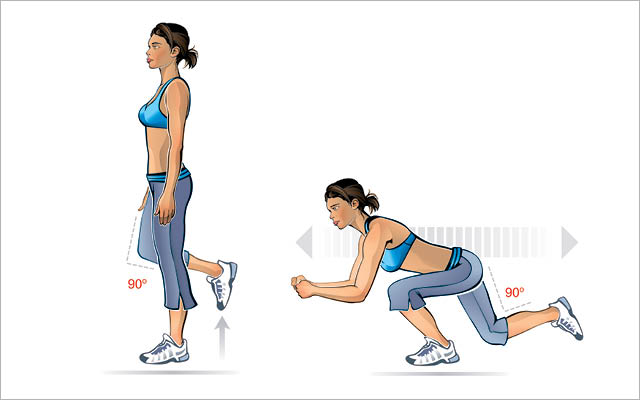
Sets and Reps: Three sets of six to eight on each leg.
- Stand upright and shift your weight onto your left foot, bending your right knee 90 degrees, so the foot is behind you and off the floor.
- Keeping your left knee tracking over your standing foot, bend your left knee, hip and ankle, slowly lowering your right knee — and your entire body weight — toward the floor (your position will resemble that of a speed skater at full tilt).
- When you’ve lowered yourself as far as you can, reverse the movement and return to the starting position. Finish all the repetitions on your left leg before shifting sides.
The Finer Points: Somerset recommends using a mirror your first few times doing this exercise to make sure the knee on your standing leg doesn’t collapse inward, a sign that your hip rotators aren’t pulling their weight. “Only perform the movement as far as you can while keeping your knee tracking above your foot. Over time, you’ll gradually be able to sink into a full squat with the knee still tracking directly over your foot.”
6) Weighted Single-, Stiff-Legged Dead Lift
Perform this lift as described in the mobility circuit above, but this time holding two dumbbells or kettlebells in your hands. Instead of extending your arms overhead, allow them to extend downward as you perform the movement (but don’t allow your back to round!).
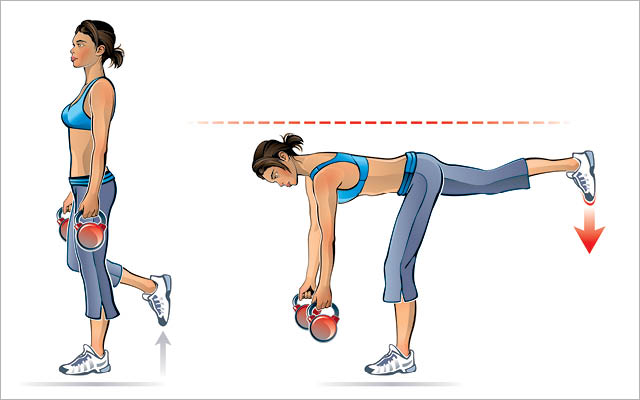
Sets and Reps: Three sets of six to eight on each leg.
The Finer Points: For tight-hipped people, Somerset prefers this version to the more popular two-leg version: “Most people have naturally better form on the single-leg dead lift than they do on the double-leg version — that extended back leg helps people use their glutes properly.”
Instead of using two dumbbells, you can also hold a single heavy dumbbell in the hand opposite your standing leg (i.e., the left if you’re standing on your right). This creates an additional challenge to rotational strength and stability for your standing leg and hip.
See all the moves in action at The Hip, Hip, Hooray Workout (Video).
This article originally appeared as “Hip, Hip Hooray” and has been updated. It was originally published online on September 1, 2011.
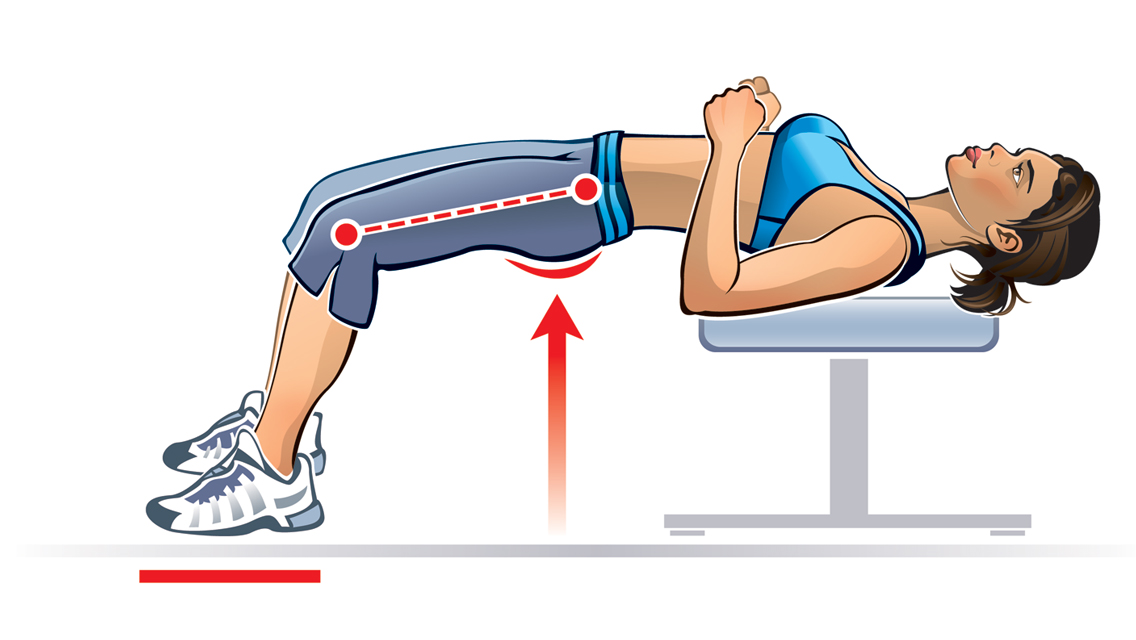
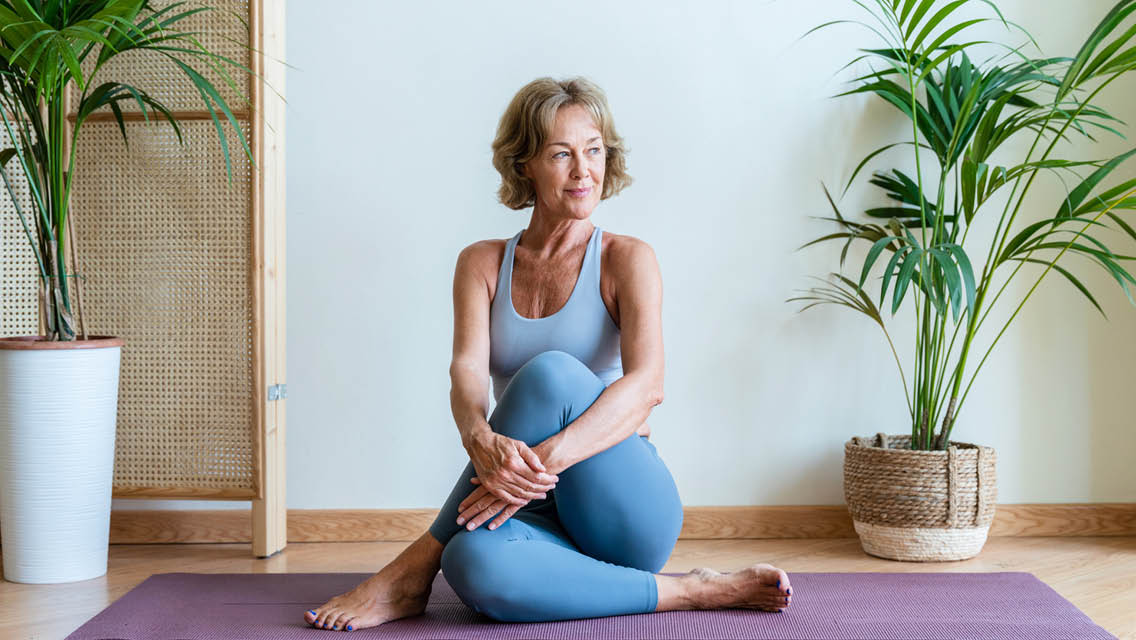


This Post Has One Comment
If you have bad knees some of these squats are not recommended. What can those of us who have been told to skip squats do instead?